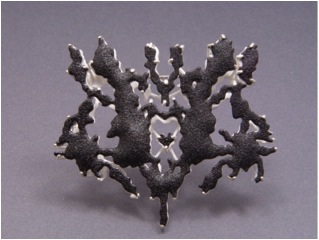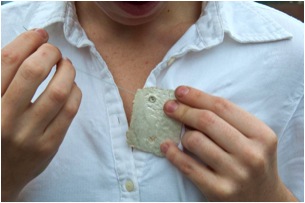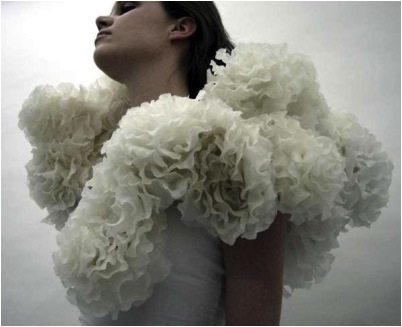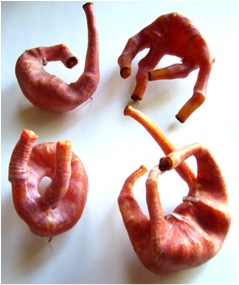This essay was first delivered as a talk at the Going to Extremes SNAG conference in 2010 in Houston, Texas, on March 13, 2010.


While thinking about these questions, I happened to mention them to gallerist Sienna Patti and we fell into a meaningful conversation about how one defines an emerging artist in the jewelry world. Sienna reminded me of the differences between other aspects of the art world and jewelry in this regard. For example, jewelers more quickly move beyond the status of emerging artists than their brethren in other media. Once a jeweler secures a place in exhibitions or publications, a teaching job, or any other well-defined public role, they move very quickly beyond the moniker of ‘emerging.’ Not so in the rest of the art world. Painters, sculptors and so on can struggle for decades labeled as ‘emerging artists,’ waiting for their big break at a recognized institution that will launch them to established status.





One: The Environment
Today, many students are coming to the discipline of jewelry already programmed to express themselves through ideas. And because most jewelry programs today offer more than just skill and technique-based classes, students also come to understand the role jewelry has to play as an art form. Many study history and contemporary issues central to craft, art, design and material culture. Being involved in this wide range of scholarship inherently causes them to synthesize disparate ideas and think in new ways.

What type of jewelry are the students gravitating towards making? The answers were illuminating.
‘Students are conscious of the conditions that surround objects within the field. They locate themselves in a range of ways – they consider the history of objects embedded in the field and the contemporary resonance of that history. They query ideas of value, commodity and luxury goods. They consider craft as a working methodology and are often interested in the intersection between the singular/one-of-a-kind object and the multiple/reproduced object and by extension they are curious about the intersection of craft and digital technology (and spaces for critical inquiry within this).’

‘Most students today want to make work that seems smart and perhaps a bit ironic and that seems to participate in an intellectual discourse which has been established as the way to think about art since John Baldesari at Cal Arts decades ago. The trend towards concept is built into our students, built into the art world and is inevitable in today’s work. But I feel like the climate geared towards building a sensitive and disciplined relationship with material technique is out the window.’

The results exist at two extremes, as one person articulated: ‘I encounter people who are technically skilled but have to stretch to think conceptually. On the other side, many students become over-cerebral and can talk about work but have a hard time thinking through their fingers. I notice that a certain kind of borrowed conceptual thinking is prevalent – a consumption of a canon of intellectualism that is not based on experiences or thoughts that they’ve had themselves. They’ve taken their thinking from books and this blocks them more than it enables them to make. These two extremes can make for perfectly skilled work and perfectly consumed philosophy but doesn’t leave space for an investment of time and making that is unique and meaningful.’
Contextualizing objects, experimenting technologically and otherwise challenging the traditions of ornament are not new ideas in jewelry education. As the American jewelry field matured in the 1960s and 1970s, leaders of the prominent programs moved away from solely focusing on traditional jewelry forms and skills and instead encouraged experimentation with materials and new technologies. Following a European model, they invoked influences from architecture, painting, photography and sculpture in their teachings and encouraged students to place their works within larger artistic concepts. Interdisciplinary approaches were urged and students were given the freedom to pursue their own interests.
Today’s jewelry programs have built on this legacy. Many departments focus on jewelry, body ornament and sculpture. A broad range of material usage is encouraged – the field has not been just about metals for a long time. Emerging jewelers are also considering issues of design and presentation in relationship to their ideas and the execution of those ideas. Culture, history, handwork, emotional connections and context all factor into today’s teaching methodologies.
Two: The Audience
As a museum curator I am interested in whether today’s emerging jewelers want to be recognized by institutions such as galleries, museums and collectors as the previous generations did. Are they seeking this type of validation? This is what people told me.
’There are always some students who have a clear goal to end up in a gallery.’
’They are not inclined to go to museums or major galleries, as they do not perceive that these venues are part of their world. They can be suspicious of the institution.’
’There are students who see the dead-end or cul-de-sac of galleries and look for a new community that is growing on other alternatives. Our students like street fairs, clubs and underground exhibitions. I took students to Munich one year for Schmuck and they were completely fascinated by the guerrilla exhibitions in storefront spaces. They were really taken by their casual and brilliant methods of display, utilizing whatever means necessary to enable speed and accessibility within their resources, while maintaining a level of sophistication.’
’They are interested in alternative ways of presentation, which includes the internet as way for visibility. Well, they are far more informed, with dozens of blogs, websites etc., for them to participate in and these sources provide both desire and community. They like looking at work on Klimt02.’
The sentiments expressed above are nothing new and in fact, are consistent with the ideas of presentation that emerging artists have in all disciplines. Collaborative experiences, alternative methods of display and viral happenings are buzz-inducing methodologies today. The view of a museum as a place where objects go to die is an unappealing, but not inaccurate viewpoint for many emerging artists. Therefore, it is unsurprising that at this stage of their career, it is not a pressing goal. And for curators such as myself, who are trained to believe that the collecting museum (as opposed to a kunsthalle) is a worthy place of admission, this attitude can be disheartening. But, if history continues to repeat itself, as these artists attain and readjust their goals of consumption, traditional forms of recognition such as being part of a museum collection, become more important.
As a final thought, I want to share with you the perspective from one professor on what she wants her students to learn. It touched me with its power and gave me great hope for future generations of jewelry artists in America.
‘I want them to awaken their imagination, to develop critical perspective, to learn to take responsibility for the past and to hold that up to the future, to cultivate discipline, curiosity and the willingness to be wrong and fail
– and hopefully, the determination necessary to build a practice that is embedded in both the pleasure and pain of creative work and to find a way to make it last a lifetime.’




